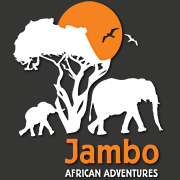Okavango Delta Overview
The Okavango Delta is formed from rains that fall over 600 miles away in northern Angola. This life-giving moisture travels down the Okavango River and spills out onto the Kalahari Desert creating the world’s largest inland delta. It has marsh, river, grasslands, and riverine forest of palms, islands, flood plains and lagoons.
Here dry meets wetland. A rich tapestry of channels flowing with crystal-clear water, the Okavango Delta stands as an oasis within a surrounding desert landscape. Over 1100 species exist in this beautiful and exceptional wilderness. A visitor can explore the maze of water passages in a mokoro, gliding among palm-fringed islands, watching hippo grunt and splash in the pools. Or one can view the wildlife that live at water’s edge in the Moremi Wildlife Reserve from a vehicle or on foot. With the seasons marked by the ebb and flow of water, the Okavango Delta hums to the rhythm of nature, which can be observed in all its glory.
Climate
The Okavango Delta has a Dry season that extends from April to October. Afternoon temperatures are warm and pleasant until September, with the heat quickly building to a fierce peak the following month. Then the rains break, announcing the start of the Wet season (November to March), and the delta starts to cool down a little. It remains reasonably hot in the afternoon, but the morning is especially pleasant.
Okavango Delta
By Road
If you’re on a road trip in Botswana, it is possible to drive from Chobe NP. The distance is about 600km/370mi and the driving time is at least seven hours.
By Air
The easiest way to visit the Okavango Delta is by charter plane from Maun Airport (MUB). This is also the country’s most common point of entry for people visiting this part of Botswana. The eastern part of the delta can also be accessed directly from Maun by 4x4, without the need for a chartered flight. Some safari operators run 4x4 mobile camping trips from Maun. When arriving by chartered flight at one of the many airstrips in the delta, you will be picked up by 4x4 or mokoro (dugout canoe) to be transferred to your lodge.
The Okavango Delta attracts a huge number of animals in the Dry season. Wildlife viewing is usually superb, especially in the Moremi GR. Four of the Big Five are easily seen. Both black and white rhino have been re-introduced, but sightings are still hit-and-miss. Elephant and buffalo are often spotted on land and from the water. There are loads of herbivores around, which attracts the big carnivores. Lion and spotted hyena are the main predators, and leopard are often viewed as well.
Best Time to Visit
Water levels in the delta are most conducive to mokoro (dugout canoe) trips in the Dry season (April to October). This is also the best time to see wildlife, putting aside the heat that dominates the two months before the rains come. You can still see animals in the heart of the delta in the Wet season (November to March), but storms and lower water levels can limit activities.








